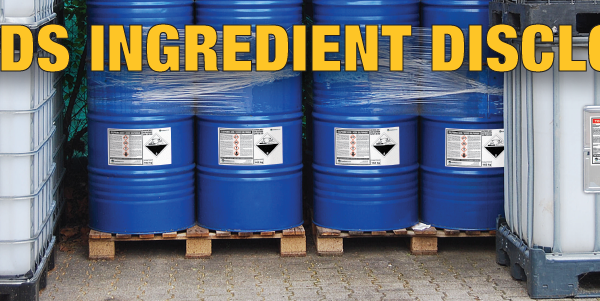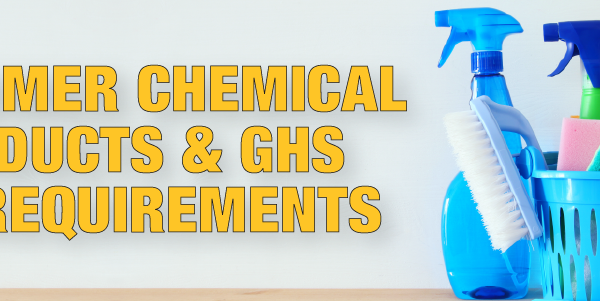Now that OSHA has revised the Hazard Communication Standard to align with GHS, the question many employers, chemical manufacturers, distributors and end users have is: Will I be able to continue to use my NFPA and HMIS labeling systems?
The answer is yes . . . But they may cause confusion. The question becomes not whether you can, but whether you should.
First, let’s look at the old standard’s requirements. In the old standard (pre-HazCom 2012), labels (and labeltext) on shipped containers and workplace labels were performance based. That means OSHA didn’t say exactly what had to appear on the labels. Instead, it said what effect the labels had to achieve; OSHA’s goal: to successfully transmit hazard information to the end user.
Many companies adopted either the NFPA or HMIS system for workplace labeling. Both systems are simple and effective. A criteria was established to identify the health, physical, reactivity and personal protective equipment that was required. A numerical system from 0-4 identified the hazard from lowest (0) to worst (4).
Simple right? Well it was until HazCom 2012 adopted the GHS recommendations and added health and physical criteria and categories. Now, a chemical that was previously a number “1” meaning it had a low hazard, is now a “4” meaning it has a low hazard.
What’s an employer to do? If you have used a number based workplace system in the past, tell us your plans. Since 1981 a lot of companies started using NFPA and HMIS systems to meet requirements of the standard in the workplace, which have never been mandatory under the HazCom Standard.
With GHS implementation, labels on shipped containers are more informative, and include six elements:
- Product Identifier matching the product identifier (name) on the safety data sheet
- Supplier Information including name, address and phone number of responsible party (manufacturer)
- Signal Word, either “Danger” or “Warning” depending upon severity of hazard
- Pictogram(s), black hazard symbols on white background with red diamond borders that provide a quick visual reference of hazard information
- Hazard Statement(s) that describe the nature of the hazard and/or its severity (i.e., flammable, corrosive)
- Precautionary Statement(s) that provide important information on the safe handling, storage and disposal of the chemical
Label information for items 3-6 is determined by the classification/categorization of the chemical which also is much more systematic under GHS. For instance, any chemical that is classified as a Category 1 Flammable Liquid will carry on the label the signal word “Danger” and the hazard statement “Highly flammable liquid and vapor.”
Where things differ between GHS and the NFPA/HMIS systems is in the use of numbers. The meaning of the ratings is reversed, for example:
Ratings for the new GHS system are 1, 2, 3, 4 and 5 with number ‘1’ indicating a severe hazard and number 5 indicates a minimal hazard.
Ratings under HMIS and NFPA are 0, 1, 2, 3, 4 with number ‘4’ indicating a severe hazard and ‘0’ a minimal hazard.
The new GHS Workplace Labeling System is a global workplace hazard communication labeling system developed to improve safety in the workplace. Based on OSHA’s “Right-to-Know” employees will recognize hazards instantly compared to HMIS and NFPA Rating System.
Learn more about ICC’s GHS Workplace Labels »
Simplicity is the key with the system as it is a symbols-based system implemented to avoid increasing language barriers. Details for the new GHS workplace labels will easily be found on the supplier SDS/label and transferred on to GHS workplace labels by workers. This system alerts workers of the potential Health Hazards, Physical (flammable symbol only) Hazards and Physical Hazards. It will also identify the minimum personal protection required when handling hazardous materials. The new system exceeds the requirements under WHMIS and OSHA’s Hazard Communication Standard (1910.1200).
Learn more about our GHS Workplace Posters »
Using a simplified symbols-only system eliminates language barriers and the requirement for additional training. Some additional changes to the system include: modification to the text in the color bars, GHS Symbols, expanded personal protection symbols and target organ effect symbols are now included on the labels.
More recently, in an OSHA brief on labels published February 2013, OSHA stated:
“Employers may continue to use rating systems such as National Fire Protection Association (NFPA) diamonds or HMIS requirements for workplace labels as long as they are consistent with the requirements of the Hazard Communication Standard and the employees have immediate access to the specific hazard information as discussed above. An employer using NFPA or HMIS labeling must, through training, ensure that its employees are fully aware of the hazards of the chemicals used.”
HazCom 2012 Workplace Labels and NFPA/HMIS
When it comes to workplace labels and secondary containers labels, under HazCom 2012, OSHA gives employers a bit of flexibility.
- Employers can provide their own workplace label provided all of the information found on the label meet GHS label requirements. This strategy has its merits since employers have already been required to train their employees (by Dec. 1, 2013) on the new HazCom 2012 shipped label elements (listed above). Since they’ve already trained their employees to recognize that information, replicating it on their workplace label creates a nice cohesive labeling system.
- Employers can use some combination of the shipped label elements, which, in conjunction with the training they provide employees on their labeling system and other information available in the workplace, provides workers with all of the relevant hazard information.
- Using the GHS Workplace Labeling System which, again, in conjunction with training on understanding the labeling system and other information available in the workplace, provides workers with all of the relevant hazard information.
- Use of NFPA or HMIS styled system. The obligation is to ensure employees – based on the employer labeling system, training, and other information available in the workplace – are aware of all hazards of the chemicals to which they are exposed.
On one hand, the bar is set very low for what has to go on a secondary workplace label. OSHA is leaving it up to the employer, allowing them to use whatever system is best for conveying hazmat information for their specific workplace and employees – this includes using the same system.
On the other hand, the bar is set relatively high for proving that your workplace labeling system achieves its goal of informing employees about the hazards of the chemicals they’re using.
Using The Compliance Center’s new GHS workplace labels, books, and posters you comply with both GHS HazCom 2012 Workplace Labeling requirements.
The test for compliance is to have employees identify workplace labels to understand “What are the hazards of this chemical?” Employers should evaluate their current system and determine if their employees can meet that level of scrutiny.
If employers do nothing more than replicate the shipping label, they may be setting themselves up for additional training, and could be placing additional burdens on employees to handle two different labeling systems (the shipping label and the workplace label.) Our recommendation is not to ask, “What’s the least amount of information I can put on a label and still be compliant?” Instead, a better approach would be to ask, “How can I best provide employees with as much information as possible to minimize the risk of exposure and a potential accident?”
So Should We Keep Using NFPA & HMIS or Switch to GHS? The Answer: Switch to GHS
The popularity of HMIS and NFPA systems really grew out of the vacuum that existed for communicating the hazards of workplace chemicals. Now that OSHA has filled that vacuum, many of the safety professionals we work with say they don’t want to carry two systems and are looking to make the switch to a HazCom 2012 styled GHS workplace labeling system.
Regarding HMIS and NFPA vs. GHS, our guess is that over the long run, most U.S. employers will think globally and begin implementing the GHS Workplace System as adopted by OSHA and not choose to have both systems in play. In the meantime, employee training is going to be paramount to ensuring workers understand the hazards of the chemicals they work with and that they are familiar with the variety of hazard information presented in the workplace.






This makes me want to slam my head in the car door.
Unfortunately, when it comes to secondary labeling, what GHS proponents don’t take into account are literacy/academic constraints in the modern work place. Despite training, simplification, and minimal education requirements, GHS continues to be a struggle when compared to simple color coding and a minimalistic approach to label presentation
What could be more simple than a picture? Do you think workers really understand what the color and number of HMIS means? And with all the different versions of HMIS, would a worker know which one their company is using and what the numbers stand for? Pictograms make it so much easier.